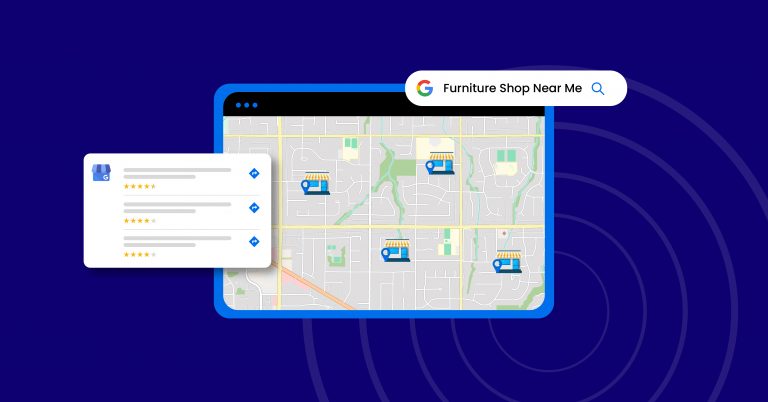Did you know that almost 75% of consumers use Google search to look for local businesses?
For local businesses, this means getting noticed by consumers who are near your store. Near is a relative term here — for example, people looking to buy ice cream will always prefer nearby stores, but they might be willing to travel a few hours for a high-value purchase like a car.
This is the core challenge in building location-specific pages. Your location-based SEO optimization has to be on point. This makes your business visible to people who are actually willing to travel to your location.
Search result rankings outside this viable radius do not mean much for local businesses. In fact, they shift your focus from optimizing for consumers who are actually open to purchasing from you. Despite decent ranking, a low conversion rate indicates a lack of optimization in location-level pages.
Let us look at some common challenges local businesses face in optimizing location pages, and how you can overcome those challenges by using a hyperlocal marketing product like SingleInterface.
Here are some common challenges you will encounter when building and optimizing location-level pages:
Location-based intent mapping is necessary to understand what people from specific locations are looking for. Certain people might be looking for value-for-money products, while others are swayed by trendy content.
Intent mapping and multi-location SEO optimization are best done by analyzing large amounts of data.
You can understand these search intents by examining hyperlocal search trends and mapping them to specific localities. This can be easily done by using product offerings such as SingleInterface. Then, you can create location-specific content for better engagement and conversion, the performance of which can be tracked through advanced reporting capabilities.
This will also give you an idea of the viable maximum distance for your business pages. If there is a high density of competitors, you will need to target consumers who are very close to your location. If you are targeting a segment that does not have many competitors, you might want your pages to be discoverable in nearby towns and cities.
Each location-specific page will have distinct SEO and content optimization needs. Your target audience might include consumers who speak different languages. And they will almost certainly have different needs and shopping habits.
Similarly, people from different cities or even different parts of the same city will not relate to the same content.
Hyperlocal optimizations are necessary for providing relatable content to different consumers. You also need to ensure that your content is relevant, engaging, and useful to everyone.
Assuming you have multiple pages, and all of them are optimized for different consumer segments, a critical question remains.
How do you ensure that each consumer receives the correct variant of the page in search results?
This is where discoverability and local SEO ranking factors come into play.
Identify local search ranking factors and optimize SEO based on those insights. This ensures local discoverability for your pages.
You need to make sure that your local search discoverability is spot-on to keep bounce rates in check. For multi-location businesses, you additionally need to make sure that the nearest location is showing up in search results.
The search landscape is rapidly changing with the introduction of new features. Direct product listings on the Google search page and conversational searches are the norm today.
With the introduction of AI search and multi-step reasoning capabilities on Google, the search landscape is set for the most disruptive update of the decade.
Maintaining your hyperlocal rankings and discoverability in such a scenario requires thorough optimization. Your system must be agile and data-driven, so that you can rapidly adapt to changes without needing experimentation.

If you are targeting consumers spread over an area larger than a single locality; manually implementing and scaling strategies to overcome these challenges is next to impossible.
You need automation to economically manage multiple location specific pages.
The same holds true for a multilingual user base. Using dedicated translation and website localization tools can help you quickly and easily create location-specific content in multiple languages.
AI-based translation addresses most shortcomings of traditional automatic translation services, increasing relatability and engagement.
If you are looking to create locally targeted and optimized business and product listings, tools such as SingleInterface provide end-to-end answers.
Consumers are increasingly leaning towards personalized phygital (a combination of physical and digital) shopping experiences. The shopping journey often starts from a mobile search engine and ends in a physical store.
Optimized location-level pages catering to different consumer segments are critical for staying competitive in such a market.
Local businesses often face problems in building, maintaining, and geo-targeting location-level pages. This article explores some of the most common challenges and guides local businesses toward strategies that can effectively help them overcome these challenges.